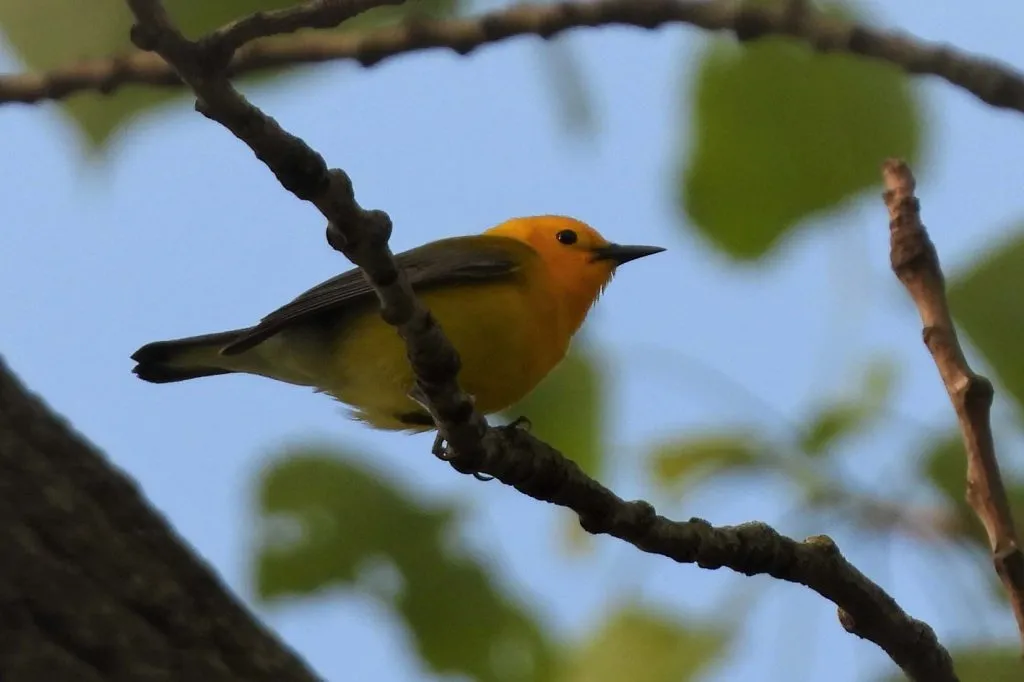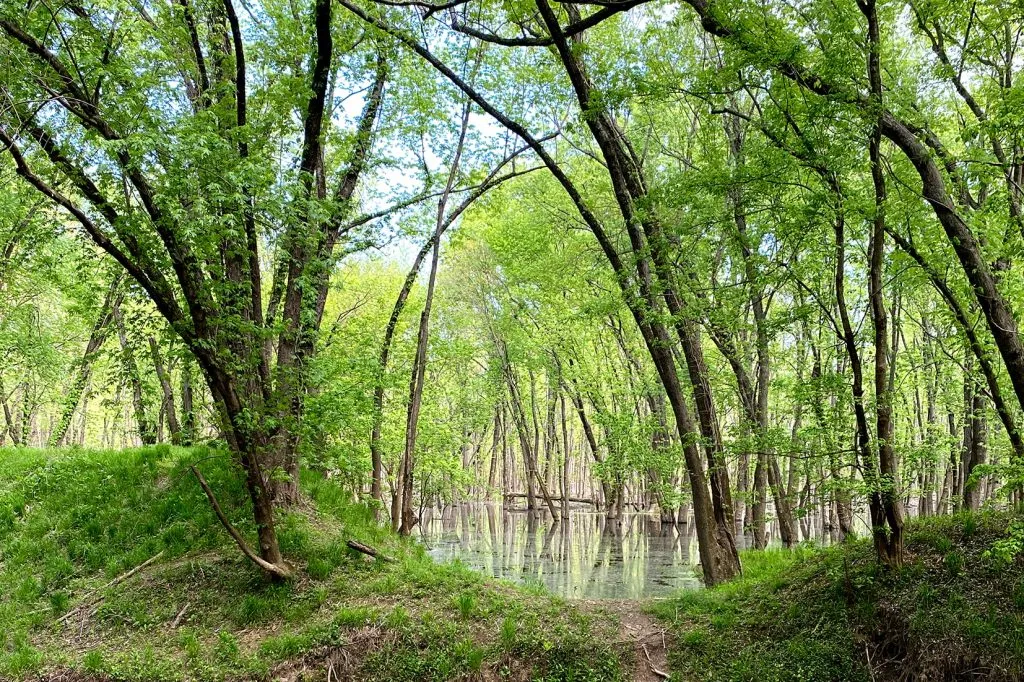
We were hiking through a wetland in Clarksville, Indiana, invited by OLIN to be part of the team making the decisions that would steer the ecology of Origin Park, a 430-acre park on the north shore of the Ohio River. It was April and LWLA’s purview was to document the existing vegetative cover and experience the landscape for the first time.
A group of us early birds, led by team member Mike McGraw of RES, had started the morning birding and among a diversity of birds we observed a Prothonotary Warbler (Protonotaria citrea) in tree canopy at the forest edge. The conspicuously golden warbler is an indicator of healthy swamps and bottomland forests.

OLIN had invited us to help design the meadows that, along with forest and wetland habitats, will replace a degraded industrial landscape. The River Heritage Conservancy has begun to transform the riverfront expanse into a world-class park. A new Events Center, River Arts House, and an extensive network of trails, boardwalks, and bridges will be rich cultural and civic assets for southern Indiana and metropolitan Louisville, Kentucky.
Despite having a large and accomplished team of designers, ecologists and engineers on the project, we soon realized that beavers (Castor canadenis) are in fact the local landscape designers. Once nearly extirpated from North America, they are on the rebound within the landscape that will become this new park. They are expanding an area of swamp by felling trees and engineering a network of dams. Their regime of disturbance has created a cathedral-like flooded forest of surprising beauty and tranquility.

After our early bird walk, we rendezvoused with the entire team and began to crisscross an existing woodland, where we first saw the new expansions of beaver swamp. Looking across the creek and ten feet up the bank to where it crests into a forest floor stretching back to the horizon, we expected to see more of the native plants we encountered earlier: Water Hemlock (Cicutum maculata), Canadian Honeywort (Cryptotaenia canadensis), Butterweed (Packera glabella), Pickerweed (Pontederia cordata), and Lizard’s Tail (Saururus cernuus), to name a few. Instead, groundlayer vegetation was replaced by the shimmering reflection of blue sky on water, dotted with the green underside of leaves. The unexpected phenomenon was akin to an Escher visual effect.

The healthy trees had yet to succumb to inundation and the watery surface beneath was extensive, flat, and still. Where once was a fairly low diversity forest, we now found a wetland supporting Wood Ducks, Dragonflies, Prothonotary Warblers, the state rare Blanchard’s Cricket Frog, and a whole host of other species, all courtesy of the beavers’ industrious landscape transformation.

Like the beavers, our team will change the landscape. The meadows we design will positively benefit many other species as we control invasive species, add plant diversity, and create novel ecosystems to benefit a diverse existing matrix. And human visitors to Origin Park will experience the fantastic colors, textures, and year-round dynamics of native meadows as they enjoy the other amenities of this ambitious and exciting new park.